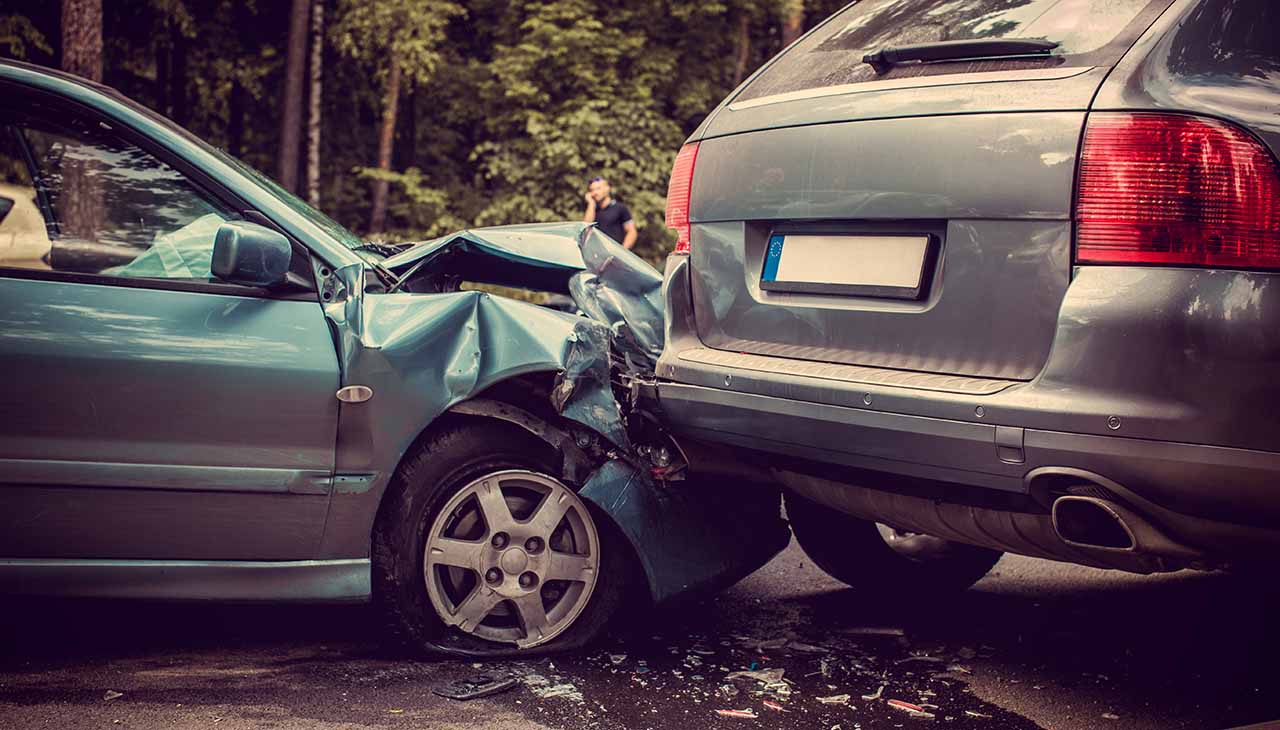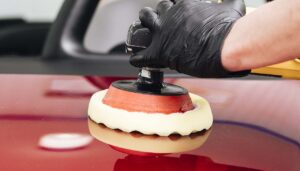
Image of a auto accident involving two cars.
Introduction
The jarring impact of a car accident can leave anyone disoriented and confused. In those crucial moments, knowing what steps to take can make all the difference in ensuring a smooth collision repair process. This guide is tailored for drivers and car owners who want to be prepared and informed about the post-accident procedure. From immediate actions at the scene to selecting the right repair center, this comprehensive guide will walk you through everything you need to know.
Immediate Actions After an Accident
Car accidents happen more often than we’d like to admit. The first few moments after an accident are critical. First, ensure your and others’ safety by moving vehicles out of traffic, if possible, and turning on hazard lights. Safety is paramount—check for injuries and call emergency services immediately if anyone is hurt.
Next, gather essential information. Exchange contact and insurance details with the other driver(s). Don’t forget to note down the make, model, and license plate number of the involved vehicles. Photographs of the scene, damages, and any relevant road conditions can be invaluable later.
Lastly, if there are witnesses, kindly ask for their contact information. Their accounts might be crucial when dealing with insurance companies or legal matters. Staying as composed as possible helps you cover all bases efficiently.
Contacting Your Insurance Company
Once you’re safe and have collected all necessary information, it’s time to contact your insurance company. Swiftly reporting the accident allows the claims process to start promptly. When speaking to your insurance provider, be clear and concise about the events leading to the accident, providing all gathered information.
Be honest about the incident. Misreporting details can lead to complications or even denial of your claim. Meanwhile, ask about the specific steps required to move forward with your claim. Insurance companies might have preferred repair shops or specific processes that need to be followed.
Keep a record of all communications with your insurer, including names, dates, and details discussed. This documentation will be useful if there are any disputes or questions later in the process.
Choosing the Right Collision Repair Center
Selecting the right collision repair center is crucial for ensuring your vehicle returns to its pre-accident condition. Start by looking for certified repair shops. Certifications from entities like the National Institute for Automotive Service Excellence (ASE) signify quality and reliability.
Reputation matters. Look for reviews online and ask friends or family for recommendations. A good repair shop should have positive feedback regarding their workmanship and customer service. Additionally, inquire about the warranty offered on repairs. A solid warranty can provide peace of mind knowing that your vehicle is protected against future issues related to the repair.
Visit the repair center if possible. Speak to the staff, check the facility, and get an estimate. This firsthand experience can give you confidence in your choice.
Understanding the Repair Process
Knowing what to expect during the repair process can ease anxieties. The process typically starts with a damage assessment. Technicians will inspect your vehicle and provide an estimate for the repairs. This step might involve disassembling some parts of the car to check for hidden damages.
Once the assessment is complete and approved by your insurance, the actual repair work begins. This phase can include bodywork, part replacements, and painting. Each step aims to restore your vehicle to its original state.
Finally, before your vehicle is returned to you, it will undergo a detailed inspection to ensure all repairs meet quality standards. Understanding these steps helps you stay informed and manage expectations throughout the process.
Dealing with Insurance Adjusters
Insurance adjusters play a significant role in the claims process. They assess the damage and determine the amount the insurance company will pay for repairs. When dealing with adjusters, be prepared to provide all the gathered information and any additional documentation they might require.
Be assertive but polite. Ensure that all damages, including those not immediately visible, are thoroughly evaluated. If you feel the adjuster’s assessment is inadequate or unfair, don’t hesitate to seek a second opinion from another adjuster or the repair center.
Remember, you have the right to question and negotiate the adjuster’s estimates. Ensuring your repair needs are met satisfactorily is paramount.
Your Rights and Responsibilities
Understanding your rights and responsibilities can protect you from potential pitfalls. Legally, you have the right to choose your repair center, even if your insurance company suggests otherwise. Ensure that all repairs are documented and that you receive a copy of all reports and invoices.
You are responsible for notifying your insurance company promptly and honestly. Failing to do so can jeopardize your claim. Additionally, adhering to your insurance policy requirements is crucial for a smooth claims process.
Repair facilities also have responsibilities. They must perform quality repairs and provide documentation of the work done. Ensuring that both parties uphold their responsibilities can prevent future disputes.
Tips for Getting Back on the Road
Once repairs are complete, take the time to inspect your vehicle thoroughly. Check for any discrepancies between the repair estimate and the actual work done. Ensure that all damaged areas have been fixed and that the paint matches seamlessly.
Take your car for a test drive. Pay attention to how it handles and listen for any unusual noises. If you notice anything off, report it to the repair center immediately.
Lastly, keep all repair documentation and warranties in a safe place. These documents are important for future reference and in case any issues arise down the line.
Conclusion
Navigating the post-accident process doesn’t have to be overwhelming. By following the steps outlined in this guide, you can ensure a smooth collision repair process. From immediate actions at the scene to selecting the right repair center and understanding your rights, each step is designed to help you get back on the road with confidence.
Remember, being proactive and informed is your best defense against the uncertainties following a car accident. For personalized assistance and more tips, consider reaching out to professionals who can guide you through the process.





